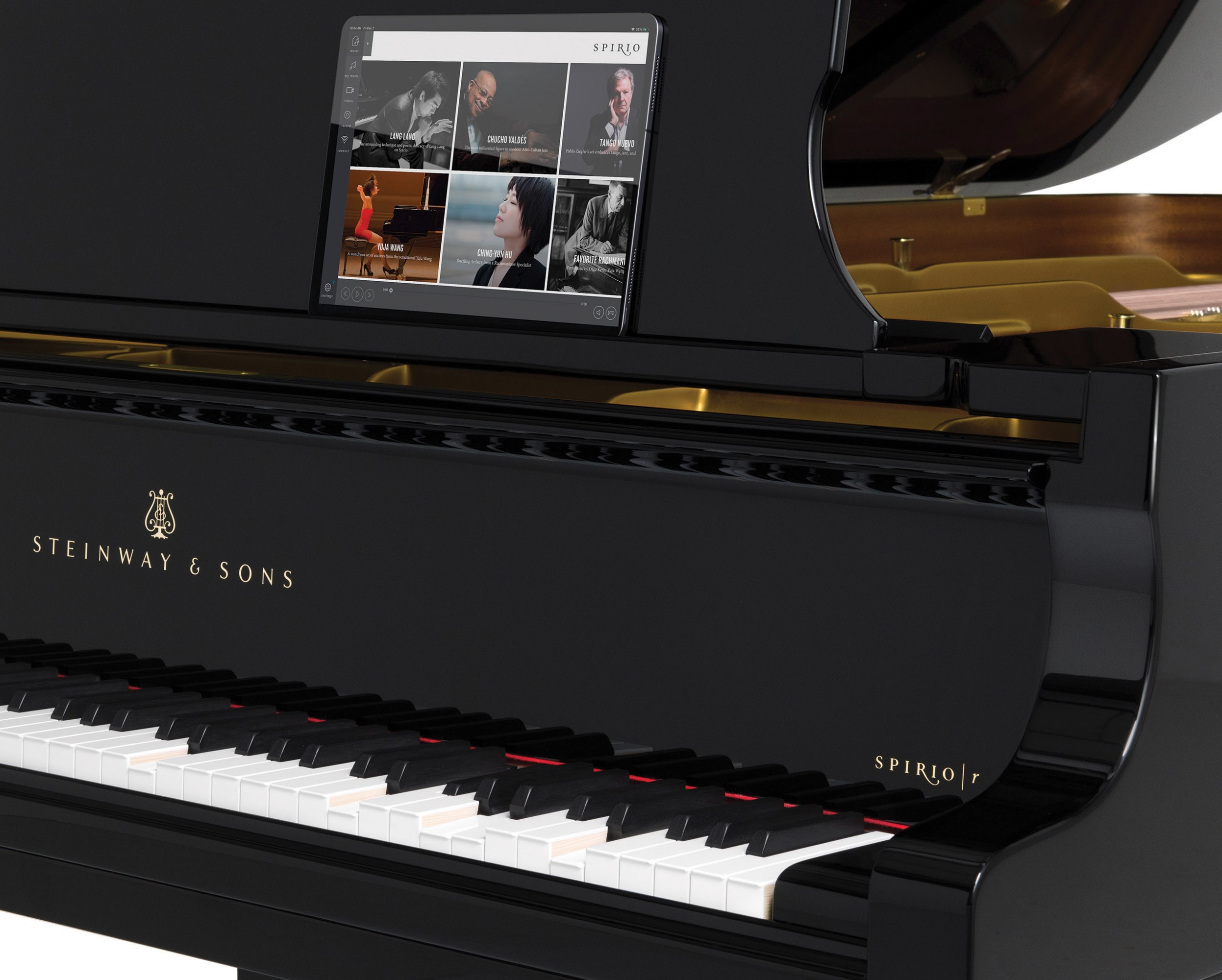The world’s most famous concert pianos got a major tech upgrade
At a showroom in a Boston suburb, Patrick Elisha sat down and began to play the opening measures of Rachmaninoff's Piano Concerto #2 to demonstrate why Steinway & Sons grand pianos are celebrated in concert halls around the world.
Steinways are meticulously crafted instruments: it takes around 250 workers a year to assemble each grand piano's 12,000 individual parts. Everything, from the hand-bent rims (made of more than a dozen layers of rock maple, each heated and shaped to form a grand piano's classic curves) to the small felt rollers in the piano's action (which help dictate how much pressure it takes to play an individual note), is crafted to produce clarion, resonant tones that range from the pianissimo bell-like chimes that open the concerto to the thundering fortissimo chords that seem to rise from the depths over its next eight measures.
Elisha, who runs the education division of M. Steinert & Sons, the world's oldest Steinway dealer, is an award-winning pianist and composer-but I wanted to hear how the piano handled a virtuoso like Lang Lang going to town on, say, We Don't Talk About Bruno," Lin-Manuel Miranda's hit from the Disney film Encanto.
 STEINWAY
STEINWAYNo problem: Elisha called up a video of Lang performing in New York's Steinway Hall on a nearby wide-screen TV. Once he hit Play on the video, whatever Lang played was perfectly reproduced on the piano in front of me. When Lang's right hand flew up the keyboard to produce the opening flourish in the Bruno" video, the keys on the piano in the room where I stood were depressed with precisely the same velocity for precisely the same amount of time.
This was, I realized, the first time I had ever heard a truly lossless recording. Acoustically, I was getting the equivalent of a private concert from one of the most famous pianists alive, courtesy of Steinway's Spirio. It's a thoroughly modern take on the player piano-a device, popular in the early 20th century, that used rolls of paper with holes punched in them to play specific tunes, no pianist required.
Roughly half of all new Steinways sold last year included Spirio technology, which adds between $29,000 and $48,000 to what is already a $150,000 instrument. The most recent addition to the line is the Spirio | r, which has recording, editing, and playback technology. A pianist who's learning a new piece can play it, record the effort, and then essentially watch the piano play it back-making it possible to pick up on nuances in timing and tone that might be harder to discern from an audio recording alone.
The Spirio, which launched in 2015, added an entirely new set of engineering challenges to what was already one of the most deliberately constructed instruments in history. Before it came to market, Steinway had to ensure that the Spirio tech was, as Elisha puts it, non-parasitic." In other words, adding pressure sensors and anything else that could cause friction between the musician and the instrument was verboten; altering the feel in any way would destroy what makes a Steinway a Steinway.
Instead, performances are recorded by dozens of gray-scale optical sensors mounted behind the keyboard that calculate the velocity at which hammers strike the piano wires whenever any of the piano's 88 keys is pressed. (The sensors have 1,020 levels of sensitivity and can take 800 measurements per second.) A different set of sensors underneath the piano measures the pedal-guided dampers; playback of both the keys and the pedals is controlled by solenoid plungers.
Each Spirio comes with a dedicated iPad; with a couple of swipes, Spirio | r users can edit their performances in an almost infinite number of ways. Everything from individual notes to entire chords can be erased or transposed, elongated or shortened, made louder or softer-if you can imagine it, you can hear what it will sound like as it's played back to you.
But it's the constantly updated Spirio library, which currently includes more than 4,000 recordings and more than 100 videos, that really makes this an instrument like no other. The vast majority of these performances are captured live, but Steinway also employs musicologists who re-create archival recordings. (Programming a single minute of archival music typically takes between 40 and 60 hours.) Thelonious Monk died when I was nine years old-but thanks to Spirio, I could close my eyes and hear what it would have sounded like if I'd been standing in the room with him when he played the eponymous tune Thelonious" in a Paris television studio before I was born. It felt like magic.
Seth Mnookin is a former music critic and the director of MIT's master's program in science journalism.